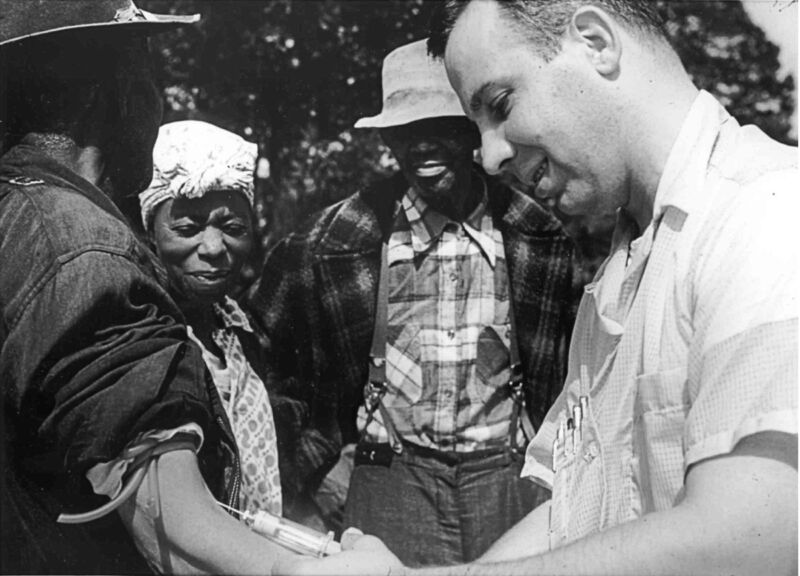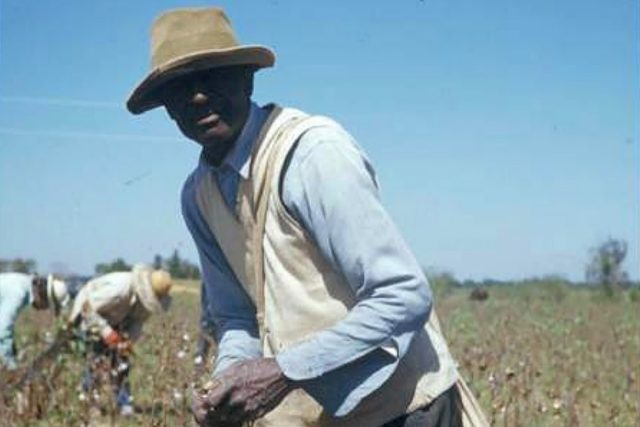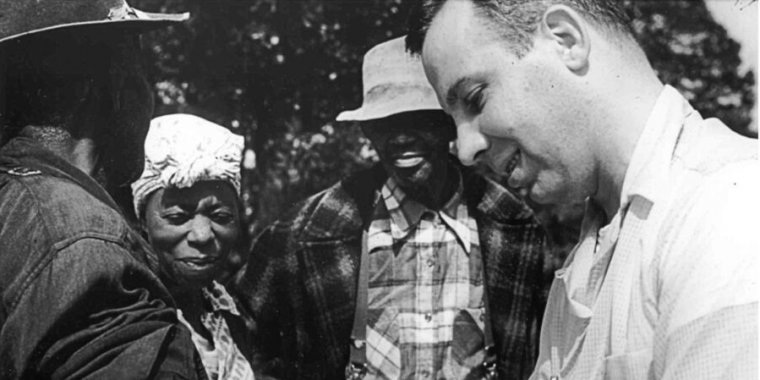
National Archives/Public domain
This year marks the 50th anniversary of The New York Times’ exposé of the infamous Tuskegee Syphilis Study, thanks to a frustrated social worker who tipped off the press. By the time it broke in 1972, experiments had been conducted on unsuspecting Black men in the area surrounding Tuskegee, Alabama, for 40 years. All 400 or so of the male subjects had contracted syphilis, and all had been told they were receiving treatment for the disease—except they were not.
The researchers in charge of the study instead deliberately withheld treatment in order to monitor the progression of the disease as it advanced unchecked. The study’s exposure led to a public outcry and heated debate over informed consent, ultimately giving rise to a number of regulations to prevent such an ethical lapse in the future. The Tuskegee Syphilis Study has since become a vital case study in bioethics, but public awareness of its existence is spotty at best. A new paper published in the American Journal of Respiratory and Critical Care Medicine seeks to remedy that, and it argues that federal regulation is not enough to prevent similar unethical research.
“Citizens have an obligation to remember the victims of any major catastrophe, as people do with 9/11,” the paper’s author, Martin Tobin, told Ars. “The men in Tuskegee suffered major injury, including death, at the hands of the premier health arm of the US government. A failure to remember what happened to these men is to add another layer of injury to what they already endured.”
Tobin, a professor of medicine at the Hines Veteran Hospital and Loyola University of Chicago Stritch School of Medicine, wanted to ensure that the remembrance didn’t get ignored in favor of another 50-year milestone this year—that of the Watergate scandal, which dominated national headlines in 1972 and ultimately led to the resignation of President Richard Nixon two years later. There have been a number of prior academic articles about the Tuskegee study penned by historians or ethicists. But over 45 years of practice, Tobin has conducted his share of research on patients, and he felt that experience gave him a unique vantage point.

CDC/National Archives/Public domain
Tobin is also a teacher who understands the power of a good story to convey fundamental principles. “Paradoxical though it may seem, scandals provide powerful instruction about research ethics because scandals put a human face on the abstract principles that are being transgressed,” said Tobin. “Everything that a medical investigator needs to know about research ethics is contained in the Tuskegee story—and it is more instructive than getting handouts about informed consent and abstract concepts.”
The scourge of syphilis
Unlike many ethically questionable research projects, the Tuskegee study was notable because it wasn’t done in secret. It had the full support of many prominent leaders in the medical profession. The idea originated in 1932 with Taliaferro Clark, then director of the Venereal Disease division of the Public Health Service (PHS), the precursor to today’s Centers for Disease Control and Prevention (CDC). Clark read about a 1928 study with white men conducted in Oslo, Norway. He thought it would be a grand idea to conduct similar research using impoverished Black sharecroppers in Macon County, Alabama, many of whom had contracted the disease. At the time, syphilis was a significant health concern, and the effects of the disease were believed to depend on the patient’s race.
Subjects were recruited with the help of a Black nurse named Eunice Rivers; her involvement was key to gaining the sharecroppers’ trust. In exchange for their participation, subjects were promised free physical examinations, free transportation to and from the clinic, hot meals on those days, and free treatment for any minor ailments. Rivers was also able to convince many families to agree to an autopsy in exchange for funeral benefits—a major concern for the project’s leaders. “If the colored population become aware that accepting free hospital care means a post-mortem, every darkey will leave Macon County,” one of the doctors on the project wrote to a colleague.
However, the researchers lied to the men about their condition; they told them they were being treated for “bad blood” rather than syphilis. They also lied about the “treatments”; the men were given dummy pills, even after penicillin was found to be effective against syphilis and became widely available. And they lied about the need for painful lumbar punctures to check for neurosyphilis, telling the subjects they were therapeutic rather than purely diagnostic.
A couple of doctors did express concerns about the ethics of the study in 1955 and 1965, but their warnings were ignored. In December 1965, a Czech-born social worker named Peter Buxton joined what was by then the CDC to interview patients with venereal disease. He soon wrote to the CDC expressing “grave moral concerns” about the Tuskegee study. When the CDC invited him to a meeting in Atlanta to discuss the matter, Buxton was berated by CDC physician John Charles Cutler, who clearly “thought I was a lunatic.” Undeterred, Buxton again wrote to the CDC in November 1968, and this time, the director, David Sencer, established a Blue Ribbon Panel the following February to discuss the ethical issues.
When the panel decided that the men should not be treated—they deemed the study too important to science—Buxton contacted the press. The Washington Star broke the story on July 25, 1972, and it landed on the front page of The New York Times the following day. The public outcry led an ad hoc advisory panel to investigate further, and the study was finally terminated in October 1972. By then, 28 of the subjects had died from syphilis, 100 had died from related complications, 40 of the subjects’ wives had been infected, and 19 children had been born with congenital syphilis.








